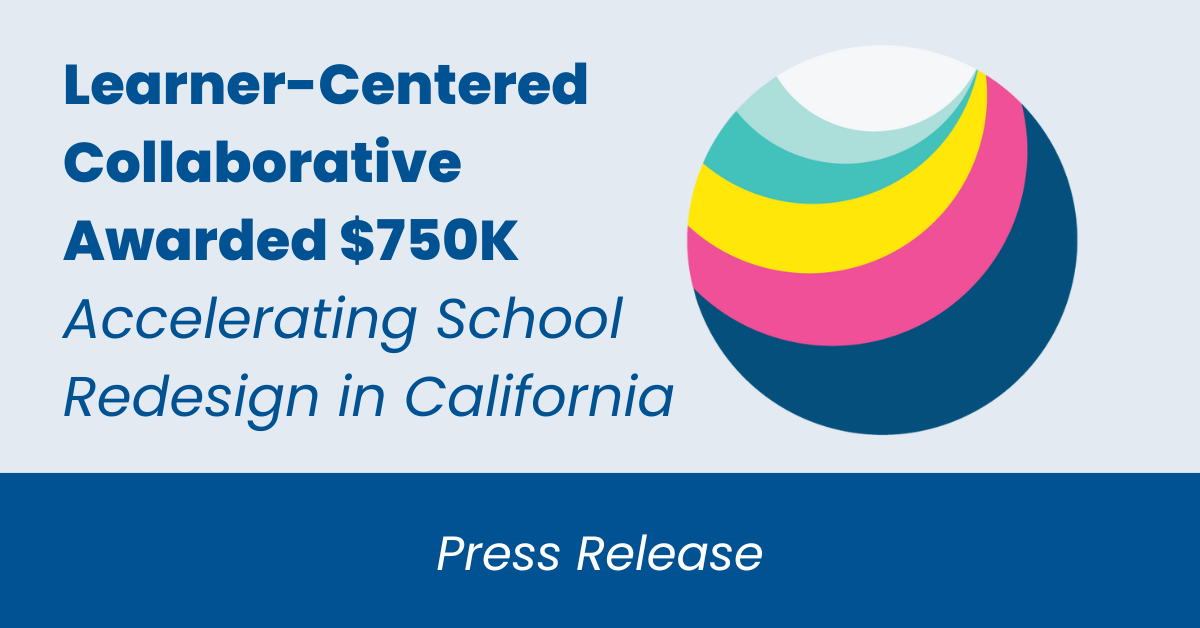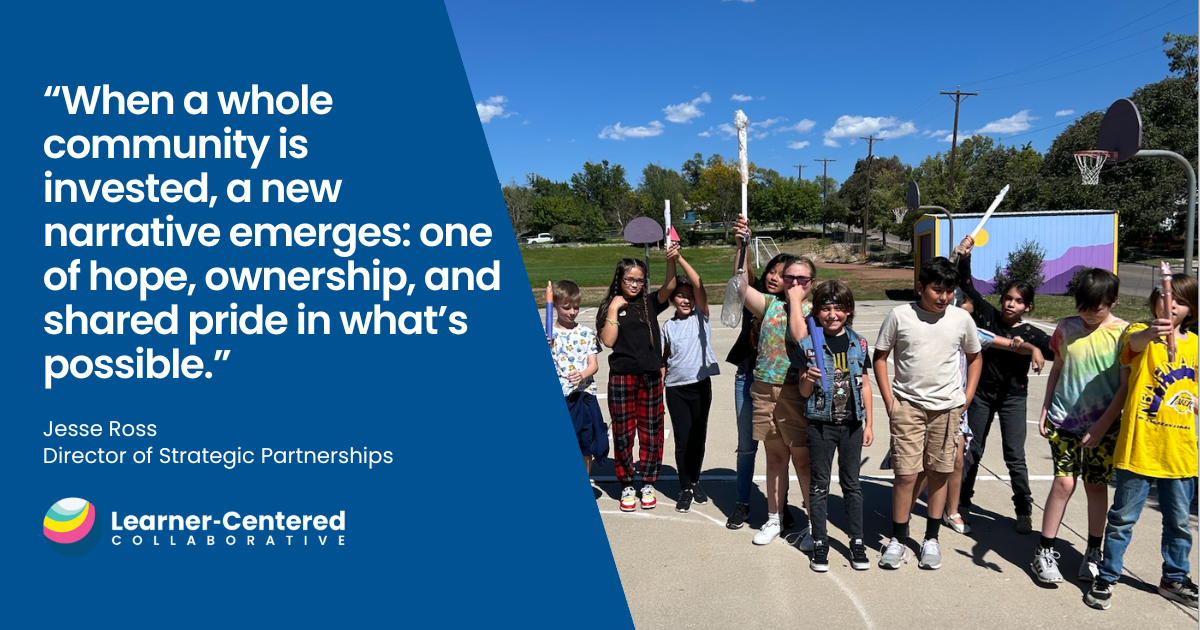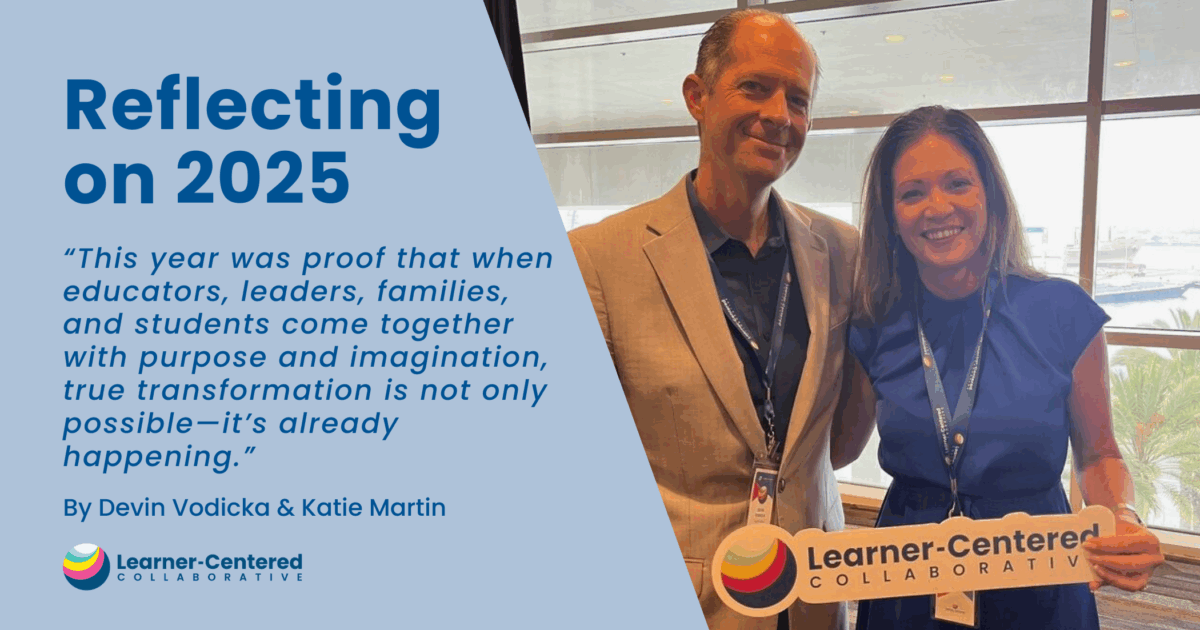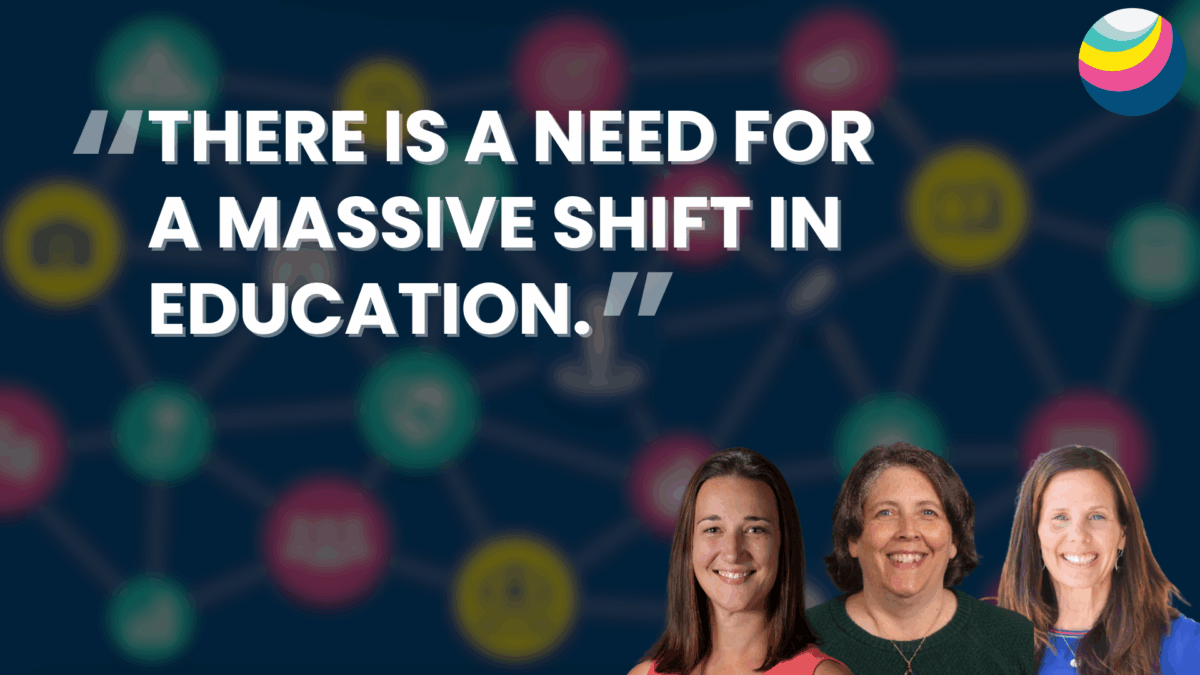6 School Design Elements That Will Bring Your Learner-Centered Vision to Life
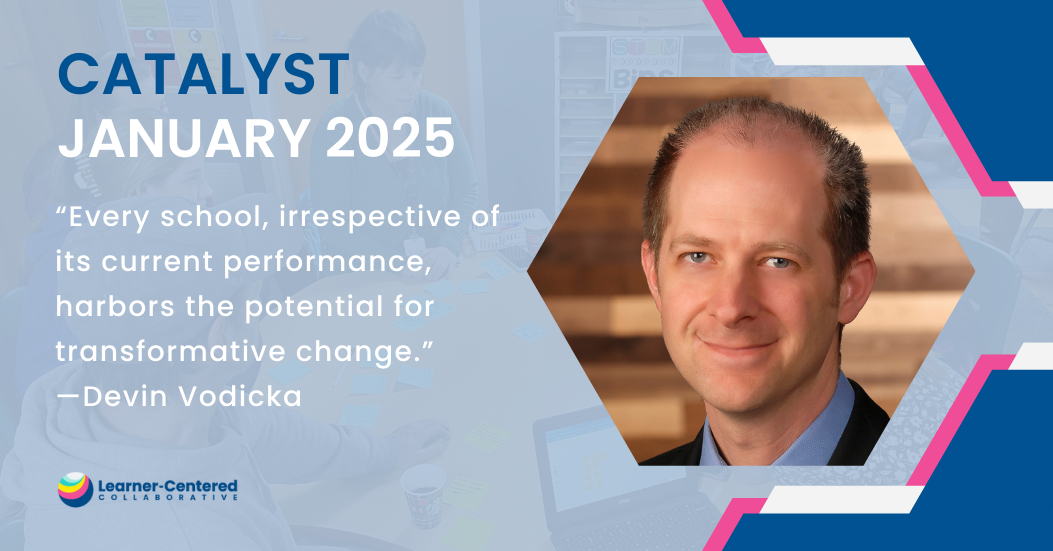
The school you walked into today does not have to be the school you walk into tomorrow. If we allow ourselves to believe this idea, so much becomes possible. We can begin imagining places of learning that adapt, evolve, and respond to the advancements of the modern world and the unique needs and aspirations of its students. In fact, we don’t even have to imagine. We can see educators and administrators across the globe proving that schools (or education writ large) aren’t bound by tradition. We can and must design school differently—work we are so proud to be doing at Learner-Centered Collaborative.
Reimagining What’s Possible Through Personal Learning Challenge Schools
In the early stages of my career before working in district offices, I was involved in the design and modernization of four different schools. Each project, whether triggered by construction modernization projects, consolidation of schools, or school expansion, provided a unique opportunity to rethink and reshape every element of each school’s structures and systems. These experiences taught me one crucial lesson: schools can be designed differently and honor our learner-centered visions, regardless of our budget.
As Superintendent at Vista Unified School District, one of our key initiatives was the introduction of the Personal Learning Challenge. This program was designed to actively involve schools in reimagining their approach to education through a voluntary application process.
Schools that opted into this initiative embraced a new learning model we had meticulously developed with the voices of our entire learning community. This cohort of schools received dedicated support and collaborated closely with one another, sharing insights and challenges as the work unfolded. Among these schools, Vista Innovation Design Academy (VIDA)—formerly known as Washington Middle School—stood out. Initially a turnaround project, VIDA exemplified how schools under duress could achieve remarkable success by fundamentally rethinking their educational approach.
However, the Personal Learning Challenge was not limited to struggling schools; it also included high-performing schools seeking to innovate and enhance their educational strategies. This mix of school contexts underscored a critical insight: every school, irrespective of its current performance, harbors the potential for transformative change. This initiative at Vista USD illustrated that with a clear vision and a structured support system, schools can effectively pivot toward more personalized, learner-centered education—setting a precedent for others no matter the circumstances.
The Six Key School Design Elements
At the core of school (re)design are six elements that our team at Learner-Centered Collaborative has seen foster substantial transformation in learning environments across the country:
- Clear Identity: Every school must articulate a compelling vision that outlines desired outcomes for learners and delineates the pathways to achieve these outcomes. This vision becomes the guiding star for all educational activities and initiatives, ensuring that every strategy aligns with the school’s identity.
- Small Learning Communities: By organizing learners into smaller, more manageable communities, schools can cultivate a sense of belonging and support both social-emotional and academic development. These communities act as microcosms of the larger school environment, each with a dedicated adult who knows each student well.
- Real-World Learning: Schools must extend learning beyond traditional classroom walls by integrating real-world challenges through projects, internships, and fieldwork. This approach not only enhances engagement but also ensures learning is relevant and directly connected to the larger world.
- Performance Assessment of Whole Learner Outcomes: Moving beyond conventional testing, schools need to adopt a comprehensive assessment system that reflects students’ actual learning and growth. Tools like student-led conferences and portfolios allow learners to demonstrate their understanding in meaningful ways.
- Teacher Collaboration: Educators thrive when they have structured time within their workday to collaborate. This collaboration fosters shared understanding and collective problem-solving, enhancing the educational strategies implemented in the classroom.
- Distributed Leadership: Leadership should not be confined to the administrative offices but distributed throughout the school. By empowering students, teachers, and staff to take on leadership roles, schools can foster a culture of ownership and initiative.
The journey of transforming education through school redesign is both a challenge and an opportunity. It demands a reevaluation of traditional practices and a bold commitment to adopting new paradigms. As we have seen in various settings, from Vista USD to Lamont ESD to Malama Honua and beyond, redesigning schools around learner-centered principles is not just a theoretical ideal but a practical and achievable goal. Let us continue to push the boundaries of what is possible, ensuring that our schools are not just places of learning but vibrant communities that reflect the aspirations of all learners.
Looking for support with your school (re)design initiative? Let’s talk! Connect with us here.
